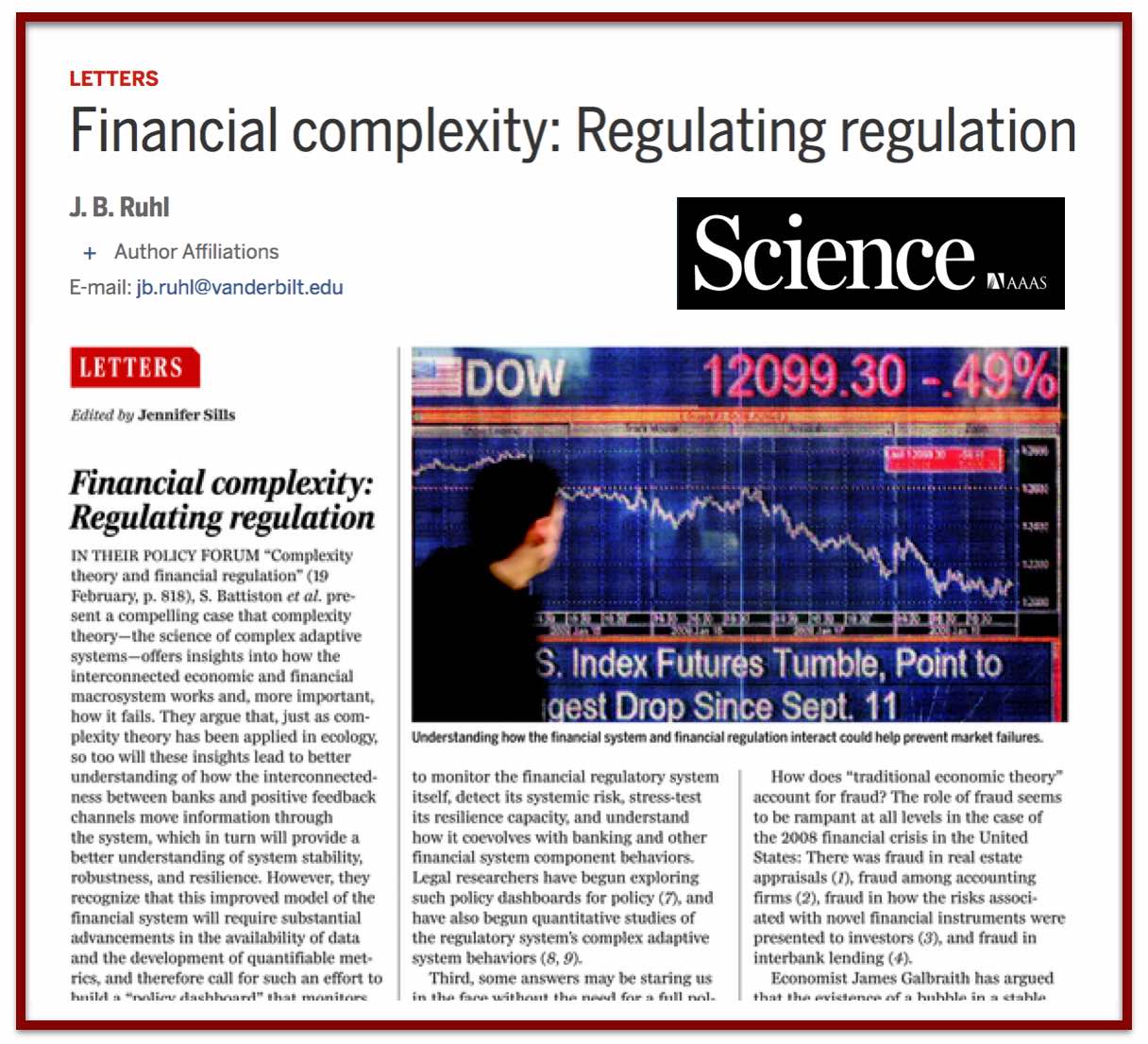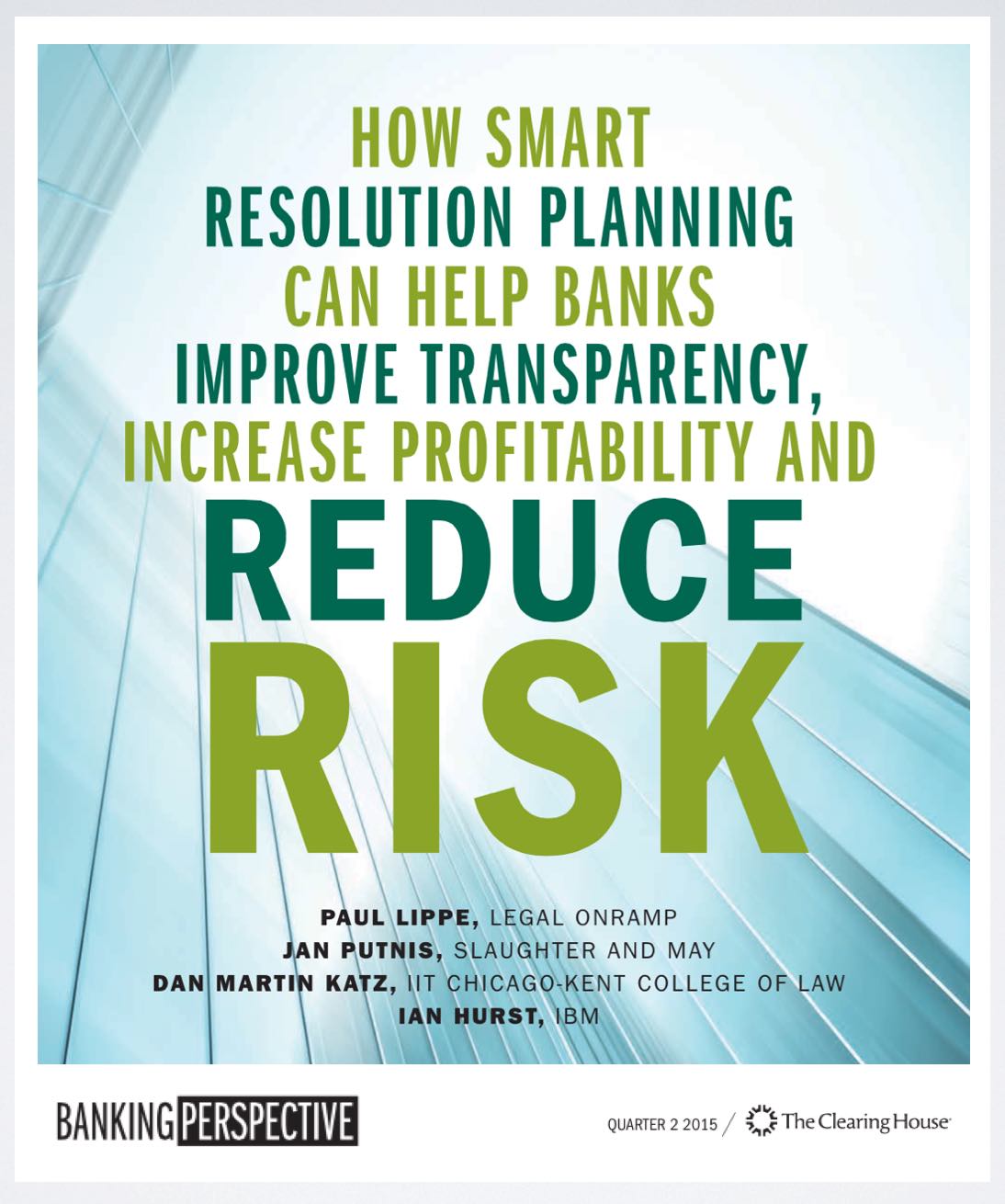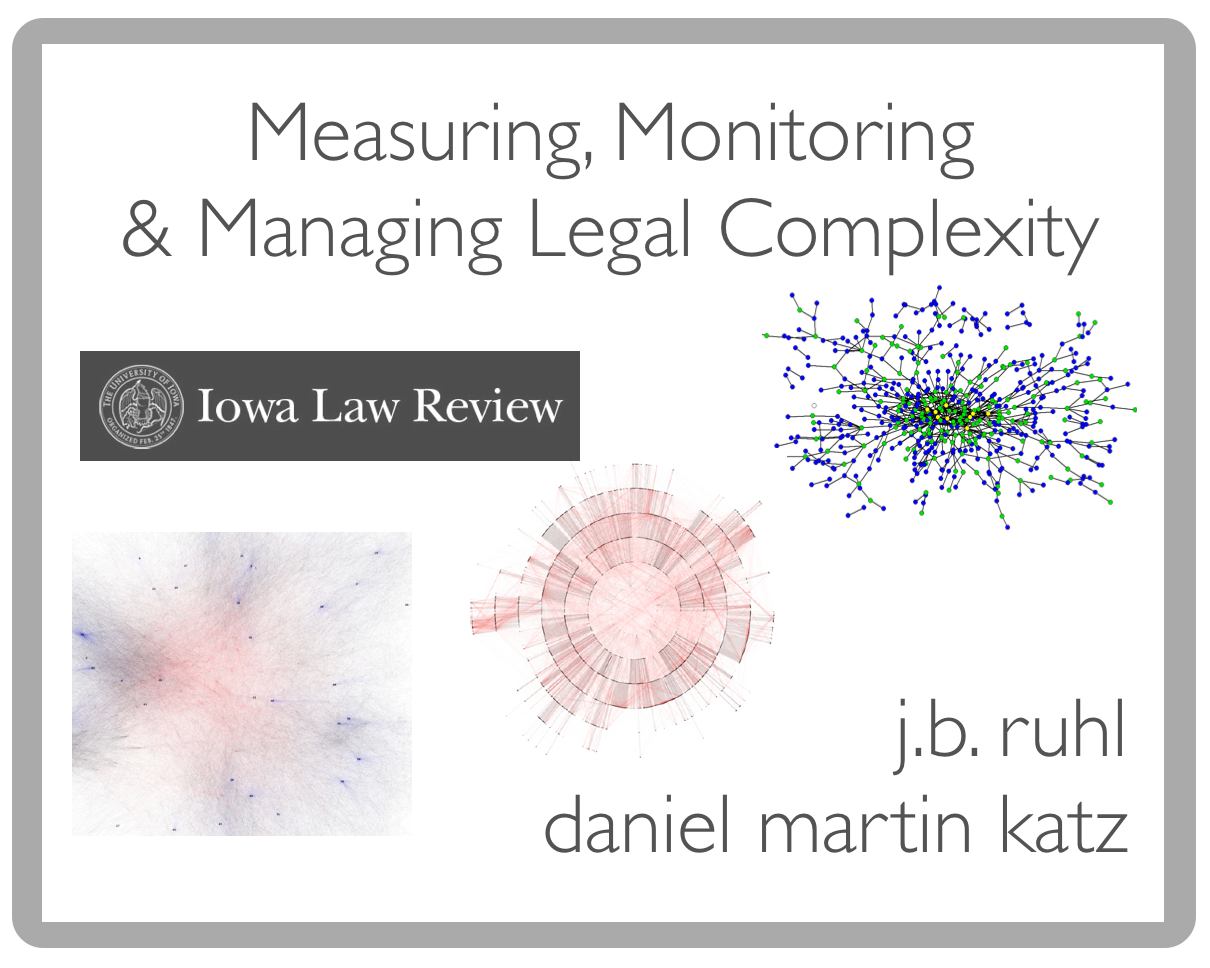Tag: legal complexity
Law is Code: A Software Engineering Approach to Analyzing the United States Code
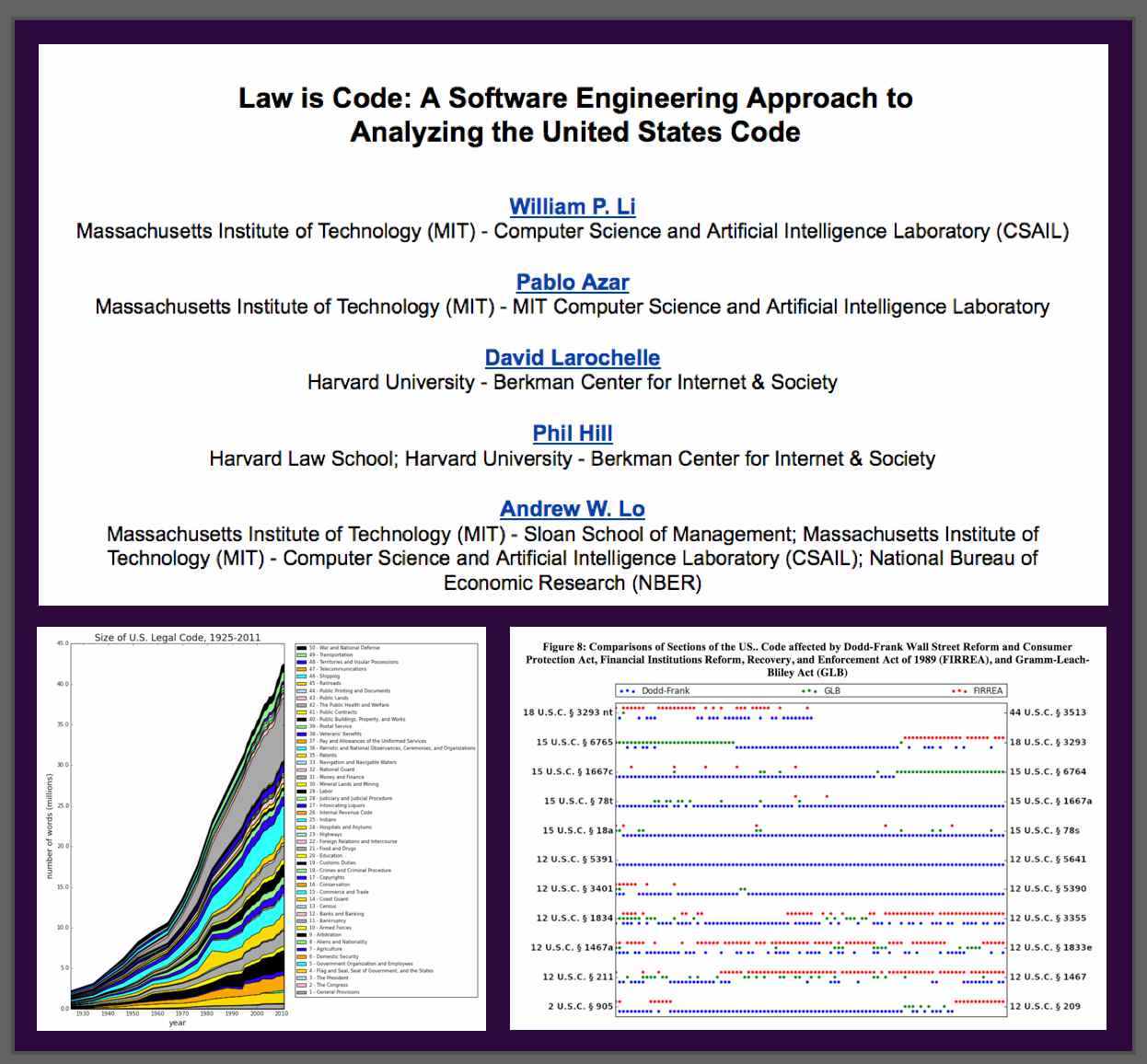 William Li, Pablo Azar, David Larochelle, Phil Hill & Andrew Lo, Law is Code: A Software Engineering Approach to Analyzing the United States Code
William Li, Pablo Azar, David Larochelle, Phil Hill & Andrew Lo, Law is Code: A Software Engineering Approach to Analyzing the United States Code
ABSTRACT: “The agglomeration of rules and regulations over time has produced a body of legal code that no single individual can fully comprehend. This complexity produces inefficiencies, makes the processes of understanding and changing the law difficult, and frustrates the fundamental principle that the law should provide fair notice to the governed. In this article, we take a quantitative, unbiased, and software-engineering approach to analyze the evolution of the United States Code from 1926 to today. Software engineers frequently face the challenge of understanding and managing large, structured collections of instructions, directives, and conditional statements, and we adapt and apply their techniques to the U.S. Code over time. Our work produces insights into the structure of the U.S. Code as a whole, its strengths and vulnerabilities, and new ways of thinking about individual laws. For example, we identify the first appearance and spread of important terms in the U.S. Code like “whistleblower” and “privacy.” We also analyze and visualize the network structure of certain substantial reforms, including the Patient Protection and Affordable Care Act (PPACA) and the Dodd-Frank Wall Street Reform and Consumer Protection Act, and show how the interconnections of references can increase complexity and create the potential for unintended consequences. Our work is a timely illustration of computational approaches to law as the legal profession embraces technology for scholarship, to increase efficiency, and to improve access to justice.”
Mike and I are excited to see this paper as it is related to two of our prior papers:
Daniel Martin Katz & Michael J. Bommarito II, Measuring the Complexity of the Law: The United States Code, 22 Journal of Artificial Intelligence & Law 1 (2014)
Michael J. Bommarito II & Daniel Martin Katz , A Mathematical Approach to the Study of the United States Code, 389 Physica A 4195 (2010)
Leg/Ex – Legislative Explorer for Data Driven Discovery (Just One of Many User Interfaces for Legal / Political Institutions)
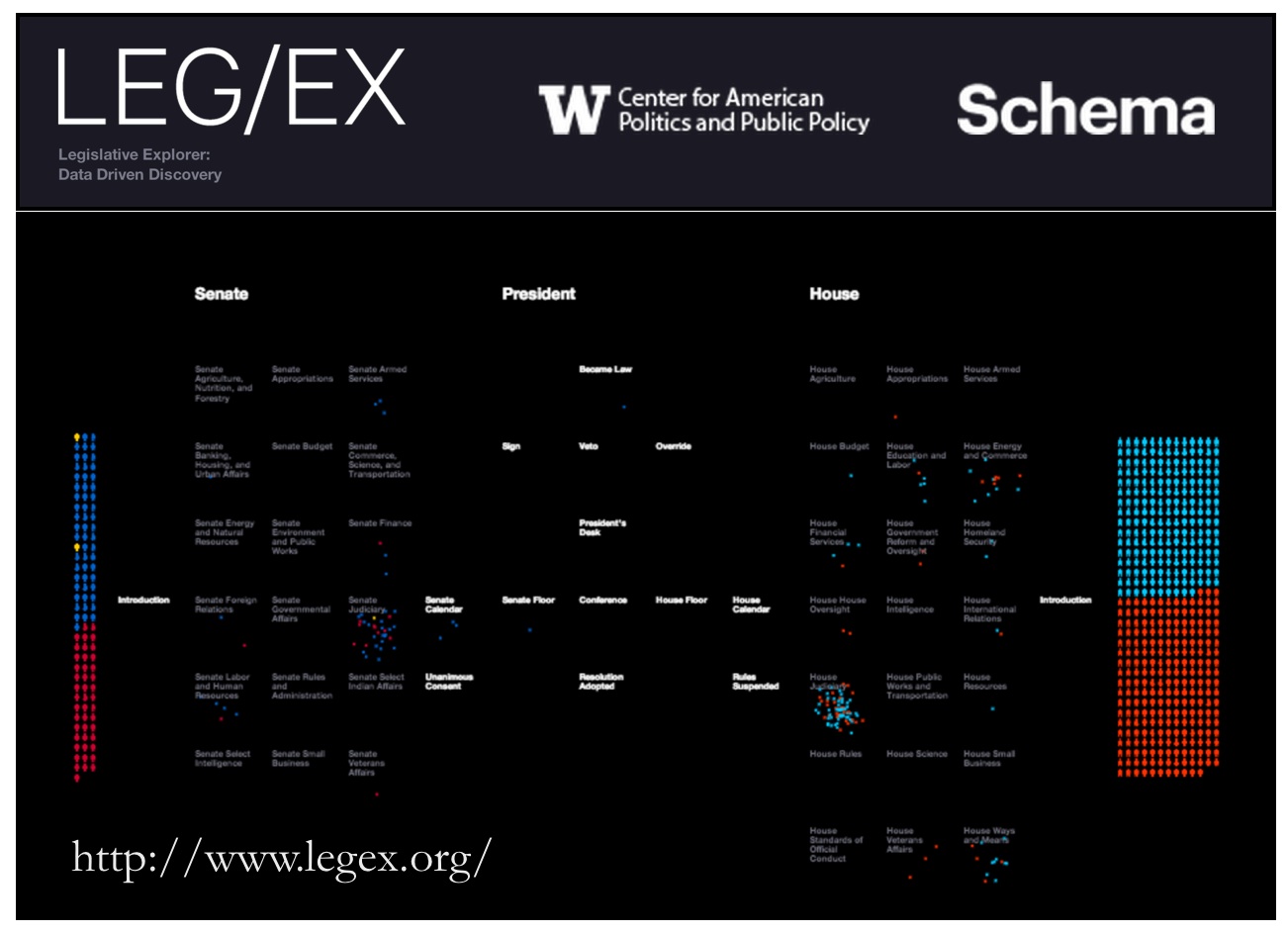 Lets face it – legal systems are complex. They are complex for the sophisticated players and even more complex for the average citizen. Complexity is the problem and the question which has been at the center of some of our recent work (see here) is how best to mediate that complexity.
Lets face it – legal systems are complex. They are complex for the sophisticated players and even more complex for the average citizen. Complexity is the problem and the question which has been at the center of some of our recent work (see here) is how best to mediate that complexity.
For long periods of time, clients and legal stakeholders have dealt with complexity by allocating human capital to the problem. However, there are other tools/methods that might be employed to mediate legal complexity.
Reducing legal complexity is a question of information engineering and it is a question of design. Legal systems need a user interface such as the one displayed above. They need UI/UX. This is a major thrust of behind design thinking for lawyers and this is will be a major thrust of work (undertaken by lawyers and non-lawyers) over the coming years. Stay tuned!
(HT: Robert Richards, Ted Sichelman for flagging this project)
Measuring the Complexity of the Law: The United States Code (By Daniel Martin Katz & Michael J. Bommarito)
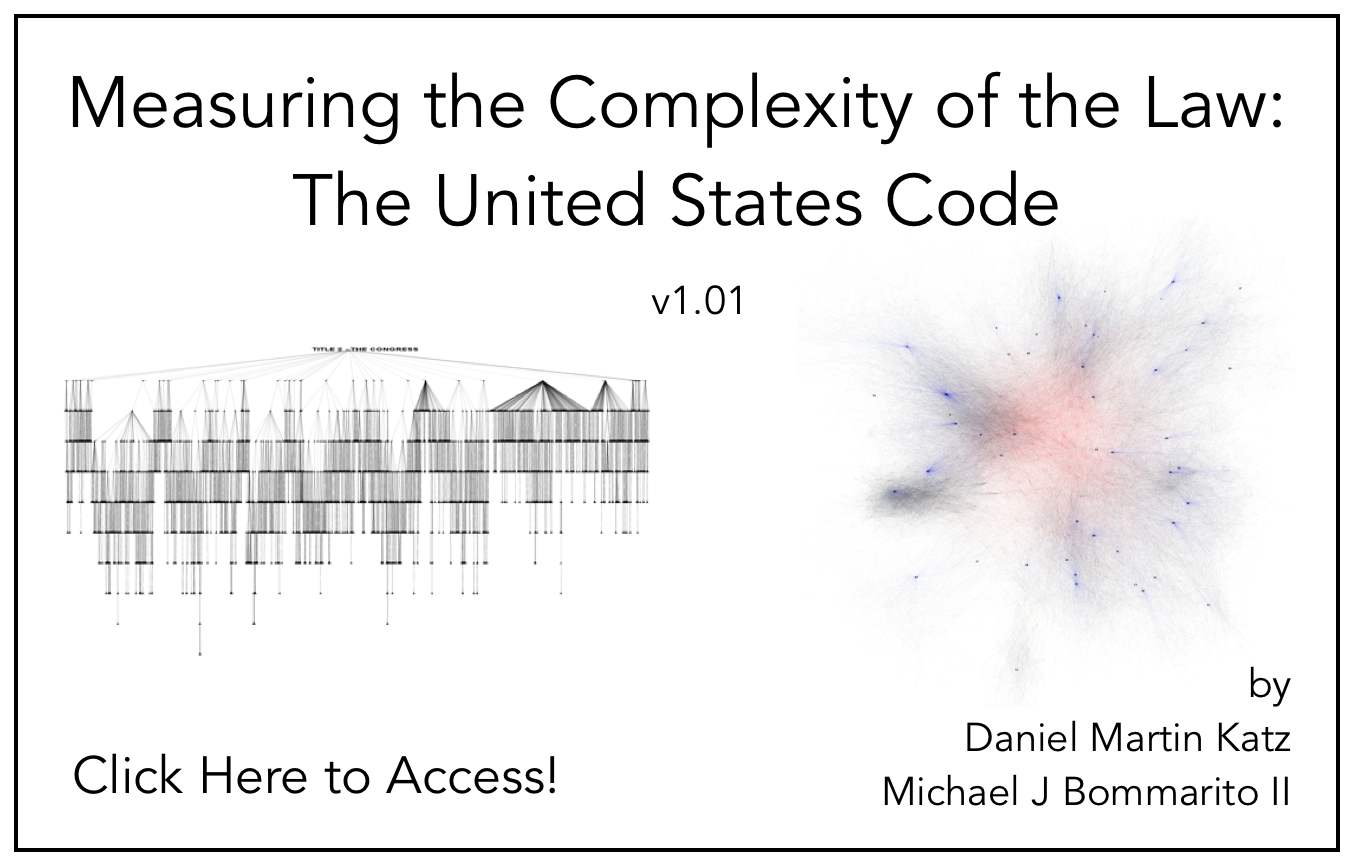 From our abstract: “Einstein’s razor, a corollary of Ockham’s razor, is often paraphrased as follows: make everything as simple as possible, but not simpler. This rule of thumb describes the challenge that designers of a legal system face—to craft simple laws that produce desired ends, but not to pursue simplicity so far as to undermine those ends. Complexity, simplicity’s inverse, taxes cognition and increases the likelihood of suboptimal decisions. In addition, unnecessary legal complexity can drive a misallocation of human capital toward comprehending and complying with legal rules and away from other productive ends.
From our abstract: “Einstein’s razor, a corollary of Ockham’s razor, is often paraphrased as follows: make everything as simple as possible, but not simpler. This rule of thumb describes the challenge that designers of a legal system face—to craft simple laws that produce desired ends, but not to pursue simplicity so far as to undermine those ends. Complexity, simplicity’s inverse, taxes cognition and increases the likelihood of suboptimal decisions. In addition, unnecessary legal complexity can drive a misallocation of human capital toward comprehending and complying with legal rules and away from other productive ends.
While many scholars have offered descriptive accounts or theoretical models of legal complexity, empirical research to date has been limited to simple measures of size, such as the number of pages in a bill. No extant research rigorously applies a meaningful model to real data. As a consequence, we have no reliable means to determine whether a new bill, regulation, order, or precedent substantially effects legal complexity.
In this paper, we address this need by developing a proposed empirical framework for measuring relative legal complexity. This framework is based on “knowledge acquisition,” an approach at the intersection of psychology and computer science, which can take into account the structure, language, and interdependence of law. We then demonstrate the descriptive value of this framework by applying it to the U.S. Code’s Titles, scoring and ranking them by their relative complexity. Our framework is flexible, intuitive, and transparent, and we offer this approach as a first step in developing a practical methodology for assessing legal complexity.”
This is a draft version so we invite your comments (katzd@law.msu.edu) and (michael.
UPDATE: Paper was named “Download of the Week” by Legal Theory Blog.


